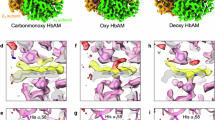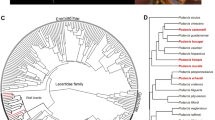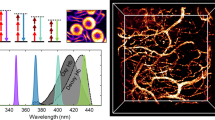Abstract
HÆMOGLOBIN has only recently been found in free-1iving copepods. Munro Fox1 found that certain mud-dwelling harpacticoids contained this respiratory pigment, while allied species living in moss or open water lacked it. The correlation between hæmoglobin and habitat can now be extended by the discovery of hæmoglobin in Elaphoidella gracilis, a species which inhabits burrows in decaying aquatic vegetation. The red pigment in this species is easily visible under the microscope, and its identity was established spectroscopically.
This is a preview of subscription content, access via your institution
Access options
Subscribe to this journal
Receive 51 print issues and online access
$199.00 per year
only $3.90 per issue
Buy this article
- Purchase on SpringerLink
- Instant access to full article PDF
Prices may be subject to local taxes which are calculated during checkout
Similar content being viewed by others
References
Fox, H. Munro, Nature, 179, 148 (1957).
Gurney, R., “British Freshwater Copepoda”, 2, 215 (Ray Society, London, 1932).
Donner, F., Int. Rev. Hydrob., 20, 221 (1928).
Author information
Authors and Affiliations
Rights and permissions
About this article
Cite this article
GREEN, J. Hæmoglobin and the Habitat of the Harpacticoid Copepod Elaphoidella gracilis (Sars). Nature 183, 1834 (1959). https://doi.org/10.1038/1831834a0
Issue date:
DOI: https://doi.org/10.1038/1831834a0



